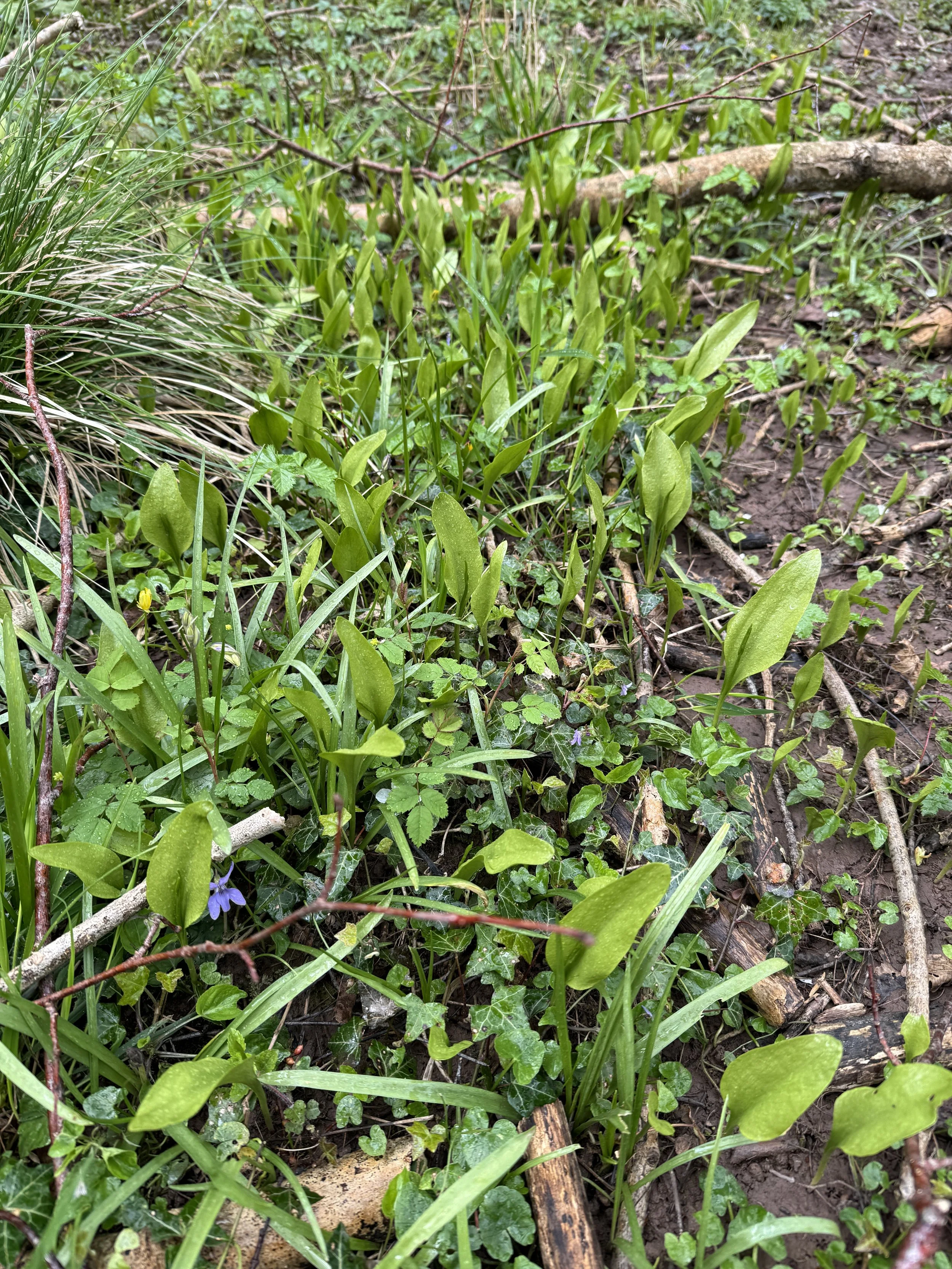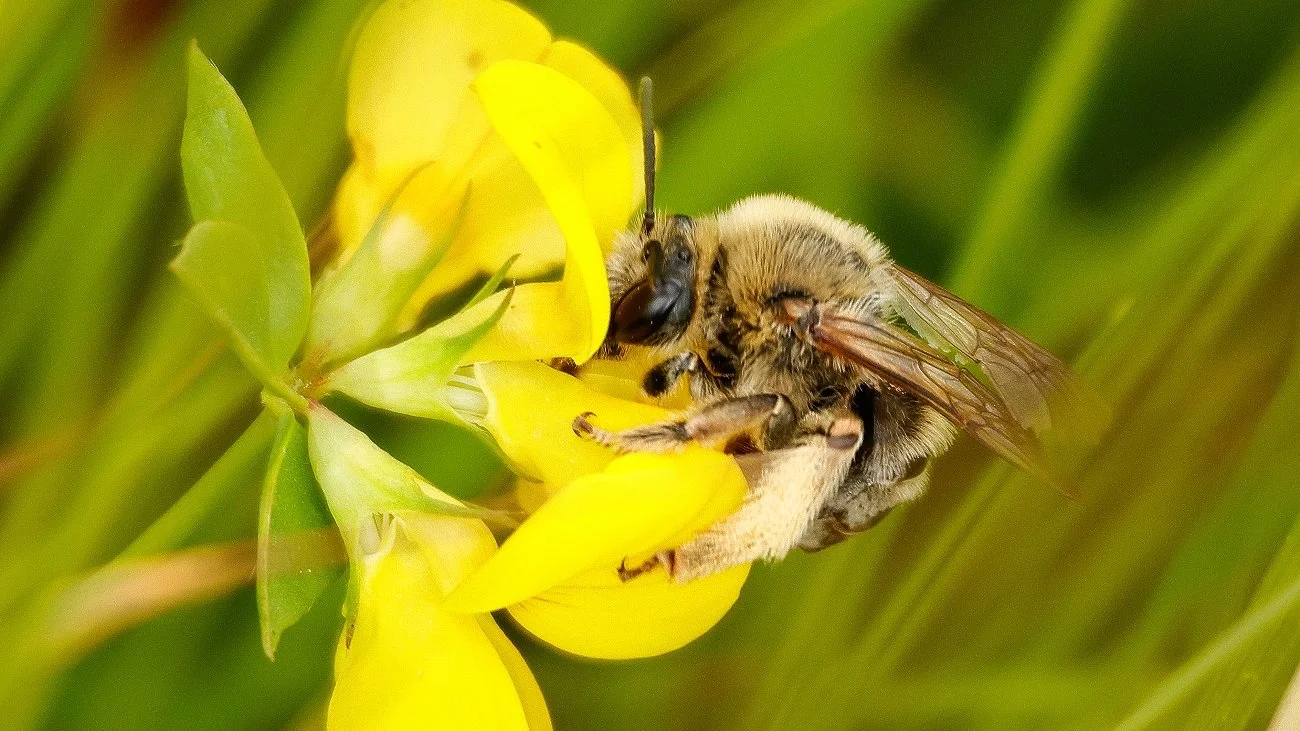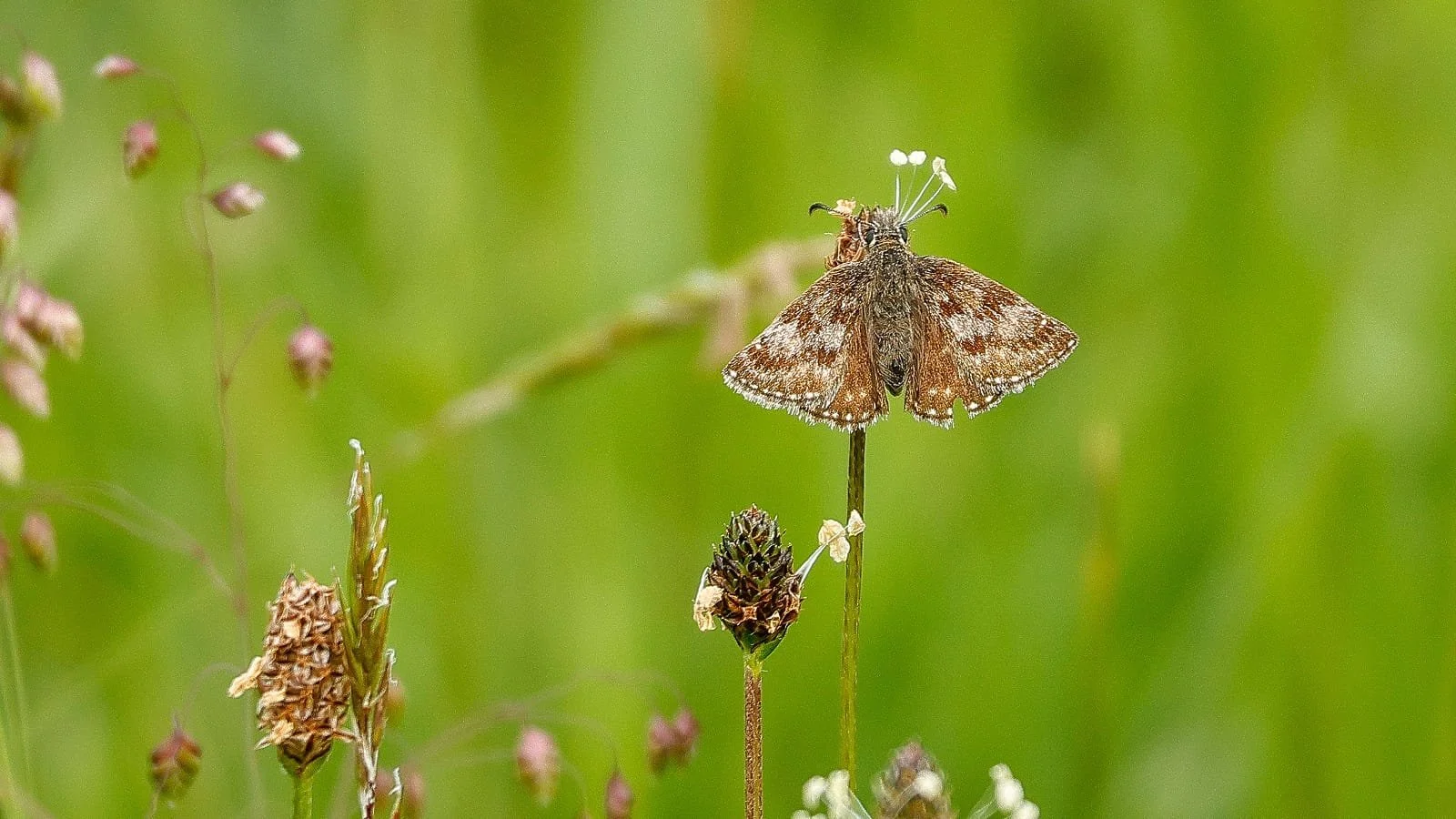The importance of surveying
The most important thing to do when considering how to change the management of a site is survey. This is for two reasons:
If you don’t know what’s there already, you can make the wrong decisions and inadvertently do more harm than good.
It gives you a baseline at the start of the project to compare future surveys against, and check things are going in the right direction.
Plants
We started with vascular plant surveys, working with the excellent botanist and former vice-county recorder for Herefordshire, Stuart Hedley. He surveyed the site in August 2023, a month after we bought it, and then visited again in early summer 2024 to try and identify everything currently growing on site. An astounding 241 vascular plants have been found so far, including rare species such as Dwarf Thistle Cirsium acaule, Adder’s-tongue Fern Ophioglossum vulgatum, and Herb Paris Paris quadrifolia. Stuart then produced an NVC map which categorises the site into different plant communities. This gives us a snapshot of the site when we bought it, and is something we can monitor changes against.
Crucially, the plant surveys found areas of species-rich grassland that weren’t previously mapped. We had identified two fields for possible woodland creation as they border an ancient woodland, but they turned out to be some of our most diverse grassland. Glad we checked!
Birds
We’ve also conducted bird surveys with top local birder Dan Webb. Dan conducted winter bird surveys in December 2023, and January and February 2024 to see what species were overwintering here. These birds migrate from colder climes to enjoy our balmy winters, like Woodcock Scolopax rusticola, Fieldfare Turdus pilaris, and Redwing Turdus iliacus.
Dan then returned in April and May 2024 to conduct breeding bird surveys. These are the birds that either live here all year round, or migrate in from warmer African climes to enjoy a more temperate breeding experience. This was incredibly exciting, finding a new breeding record for Herefordshire — the Hawfinch Coccothraustes coccothraustes, a bird rarer than the Golden Eagle! — and really good numbers of Yellowhammers Emberiza citrinella, Tree Pipits Anthus trivialis, Redstarts Phoenicurus phoenicurus, and other red-listed birds. The Meadowlands is a very good bird site!
Insects
We also embarked on insect surveys, but the terrible weather this year meant we found very little and have decided to try again next year instead. We want the data to form a useful baseline for the project, and this is hopefully an anomalously poor year, so it wouldn’t be very representative to continue.
Nonetheless, my own observations did unearth a very rare bee - the Long-horned bee Eucera longicornis - living in our species rich grassland. We also have lots of old grassland specialists like Mother Shipton Euclidia mi and Six-spot burnet moths Zygaena filipendulae, Marbled White butterflies Melanargia galathea, and a visit from Toby Fountain at Herefordshire Wildlife Trust found the Dingy Skipper Erynnis tages, a BAP-listed butterfly. So we’re hoping it will prove to be a good invertebrate site.
Adder's-tongue Fern
European Long-horn bee © William Lambourne
Dingy Skipper © William Lambourne
Future surveying
Next we’ll be hosting the Border Bryologists in October to look at bryophytes (mosses, liverworts, and hornworts).
There’s still so much more to survey, so do get in touch if this is your field and you’d be interested in visiting. We’re particularly interested in learning more about the funghi and arachnids on site. Get in touch via our Instagram.


